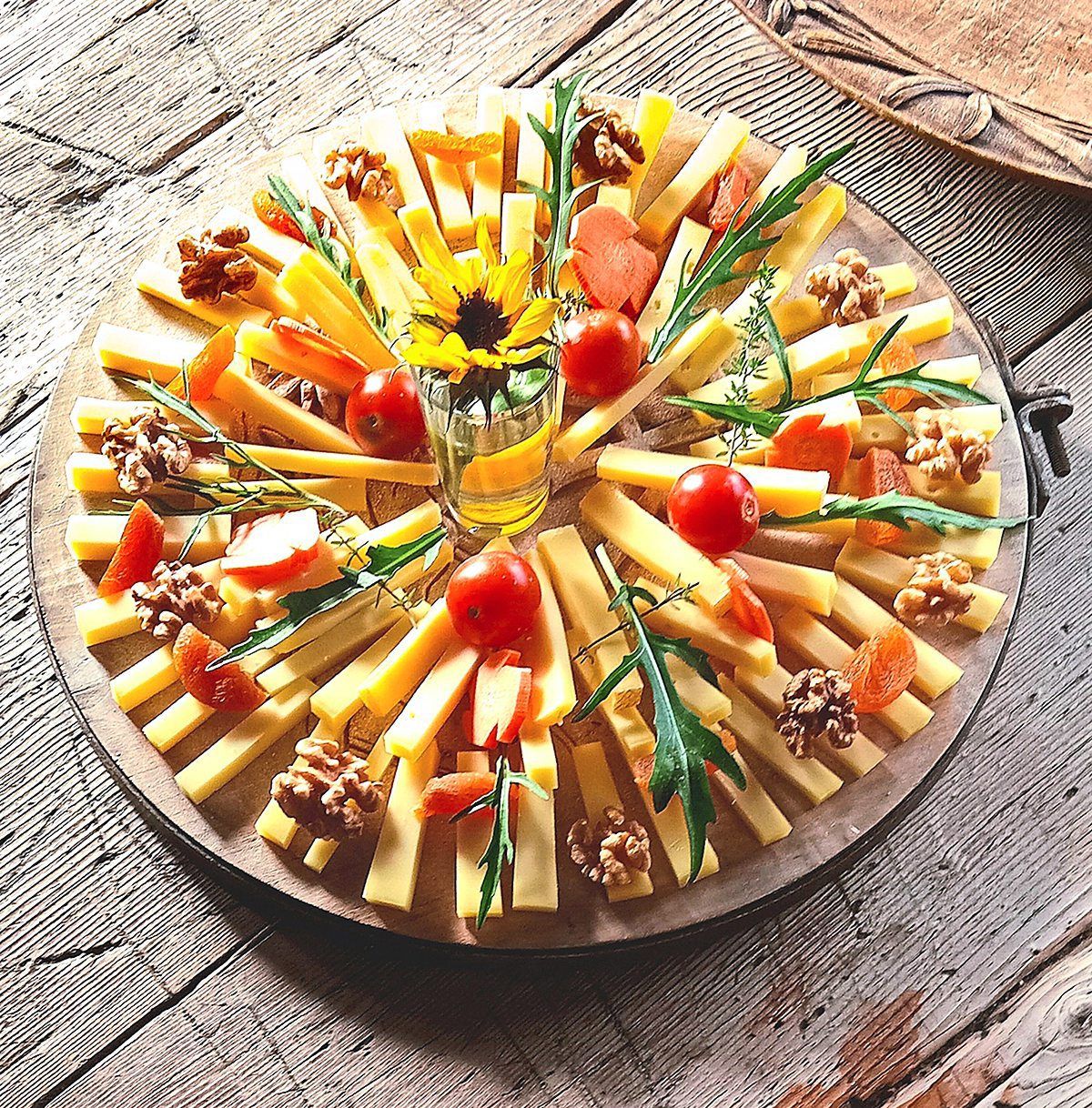Custard and strawberry tart is a specialty at Grotto Broggini in Ticino.
Switzerland is undoubtedly one of Europe’s coolest travel destinations, and it’s the European destination that most Malaysians want to visit. It’s hard not to be captivated by this landlocked nation’s lofty snow-capped mountains, meandering glaciers, verdant meadows, and crystal-clear alpine lakes.
While researching my trip to what I thought was a small country, I realised just how much there was to see and do in Switzerland.
There was a temptation to cram in as much as I could in a few days, but in recent years, I have come to the realisation that concentrating my efforts in a smaller area is a much better way to holiday.
Switzerland’s four official languages – German, French, Italian, and Romansch – influence many dishes served in the various parts of the country, so travelling here offers a microcosm of European cuisines.
Naturally, I was eager to taste the cheeses and chocolates of Switzerland, as well as many unfamiliar regional delights.
Rosti and fondue were two dishes I especially wanted to try, along with the country’s unique and luscious wines, on what was planned on my Swiss gourmet tour to two parts of the country, the Valais and Ticino.
The Valais
My Swiss flight from Singapore, with a connection from Kuala Lumpur, landed at Zurich Airport in the cool, pre-dawn darkness.
With Switzerland’s efficient rail network, travelling by train really is the best way to discover the country, and my Swiss Travel Pass, which was purchased online, enabled me to travel on almost every train, bus, and boat service there.
The rail station beneath the terminal at Zurich Airport has frequent connections to most parts of the country, and with the sun now up, I was soon heading southward on a train that passed through Bern and Brig on its way to the Swiss canton of the Valais.
The Valais (or Wallis, in German), dissected by the Rhone River, is an important canton where both French and German are spoken. I was keen to visit the Valais to sample its wines and to enjoy some delicious dishes, such as the famous cheese called Raclette.
Switzerland doesn’t actively promote the fact that it produces some 100 million litres of wine each year, as almost all of it is consumed domestically. This explained why I had never had the privilege of trying Swiss wine, but now I had that opportunity.
There are some very interesting wine villages in what is Switzerland’s largest wine-producing canton, with Chateau de Villa in Sierre recommended as one of the best places to orient myself to some of the canton’s numerous wines and the famous cheese of the Valais.
In addition to well-known grape varieties like Chardonnay, Pinot Gris, Sauvignon Blanc, and Pinot Noir (often labelled Blauburgunder), some endemic varieties created the interest I was seeking.
The best-known local grape is Chasselas (known as Fendant in the Valais), a white variety that produces a dry wine that’s the perfect accompaniment for many local dishes.
Some other varieties that captured my attention were Humagne Rouge, Cornalin, Gamay, Pinot Blanc, Petite Arvine, and Heida.
The helpful sommelier at Chateau de Villa told me that the small village of Visperterminen at 1,378m above sea level was home to Europe’s highest vineyards and a famous white wine known as Heida.
Adjoining the chateau is a restaurant where five different Raclette cheeses from the canton are offered daily, so I enjoyed these toasted, semi-liquid, nutty cheeses, which are traditionally served with gherkins, pickled onions, boiled potatoes, and crusty brown bread, for a hearty lunch.
My Valais base was in the wine village of Salgesch, where the Hotel Arkanum, located near a fascinating wine museum, offers rooms decorated with various old winemaking implements, including one room with a bed located within an oversized wine barrel.
While in the Valais, I tried several popular Swiss dishes, including dried meats and cheeses, Alpermagronen (a cold weather dish of cheese, macaroni, and stewed apple), Walliser rosti (coarsely grated, fried potatoes), and the rather interestingly named cholera (a local savoury pastry specialty of potato, cheese, and vegetables that was initially prepared in homes centuries ago when people were scared to go outside because of a cholera outbreak).
Ticino
After a few relaxing days in the Valais, it was time to travel from Salgesch via Brig for Domodossola in neighbouring Italy and the famous Centovalli train to Locarno in the southeast Swiss canton of Ticino.
Ticino, one of the 26 Swiss cantons or states, is the one located closest to Italy and where daily life is more Italian dolce vita than Swiss clock-making precision.
It was almost like I had passed into a new country, and to some extent I had, as the Italian border was not the far away, with Milano Airport, closer than the main Swiss gateway airport in Zurich.
As you cross into Ticino, not only do the signs start appearing in Italian, but there’s a distinctive change in the vegetation, with semi-tropical plants, like palms, olive trees and citrus trees dotting the landscape.
The main tourist attractions were in my sights in the towns of Bellinzona, Locarno, Ascona and Lugano.
Eating new dishes is a given for many of us in our travels, and the cuisine of the canton is dominated by Italian food, wines, and produce like rice, chestnuts, polenta, salami, and, cheeses.
My favourite restaurant in the canton was Osteria Nostrana on the Ascona promenade beside Lake Maggiore as it is a lively Italian trattoria where dishes such as risotto and pasta are served alongside signature wood-fired calzone or pizzas topped with prosciutto and mascarpone and best enjoyed with locally produced Merlot wines.
Most of the Ticino restaurants are supportive of the local wine industry, with red and white Merlot being well represented on many wine lists.
While Merlot is a common grape variety throughout the world, it is mostly used to produce red wines, but in Ticino, it is used to produce both red and white wines.
I visited Terreni alla Maggia, a winery just out of Locarno, as it offered wine tastings and offered for sale fresh farm-grown produce alongside its estate-produced wines.
Heritage to the world
Bellinzona, the capital of Ticino, is home to the Castelgrande Unesco World Heritage Site with its three ancient castles that once guarded the strategic pass between Italy and northern Europe.
Castelgrande, built over 500 years ago and located on a hill above the Bellinzona town centre, is surrounded by grapevines, and the wine produced here is served in the superbly located Grotto Castelgrande Restaurant within the castle fortifications.
The three castles were important during the Middle Ages as they protected the overland commercial route that passed over several mountain passes from northern Italy through to Switzerland and beyond.
Visitors now travel to this compact town, especially for the Saturday markets on the main square, where enticing local produce such as salamis, sausage and cheese is sold alongside freshly harvested vegetables, fruits, and chestnuts.
My gastronomic introduction to the Valais and Ticino was brief but exhilarating, and as I returned to Zurich Airport for my return flight home, I passed through areas where I had read; other gourmet treats waited.
While small is beautiful, don’t be misled into thinking that Switzerland was a destination that only warranted a few days, as I had spent time in just two of its 26 cantons and had only discovered a mere handful of all the exciting gourmet delights that the country has to offer. Travel notes for SwitzerlandGetting there: Fly to Zurich on Swiss and then travel within Switzerland by train. With one of the world’s best rail networks, choosing to travel by train is easy. Visitors should obtain one of several rail passes with the Swiss Travel Pass to travel on public transport.
Travel notes
Where to stay: In Ticino, I stayed in the Hotel & Spa Internazionale in Bellinzona, Hotel Geranio in Locarno, and Hotel Tamaro in Ascona. In the Valais, I stayed at Hotel Alpfrieden in Bettmeralp and Hotel Arkanum in Salgesch.
More info: Ascona-Locarno Tourism (ascona-locarno.com), Bellinzona Tourism (bellinzonaturismo.ch), Lugano Tourism (lugano-tourism.ch), Ticino Tourism (ticino.ch), Valais Promotion (valais.ch), and Switzerland Tourism (MySwitzerland.com).




















